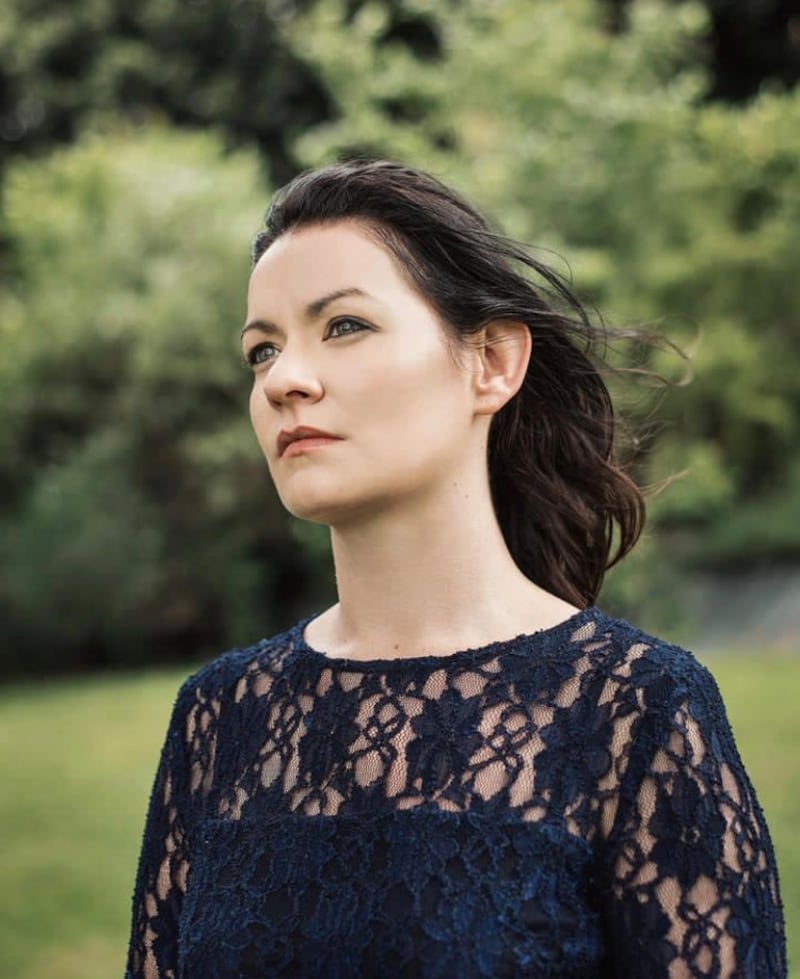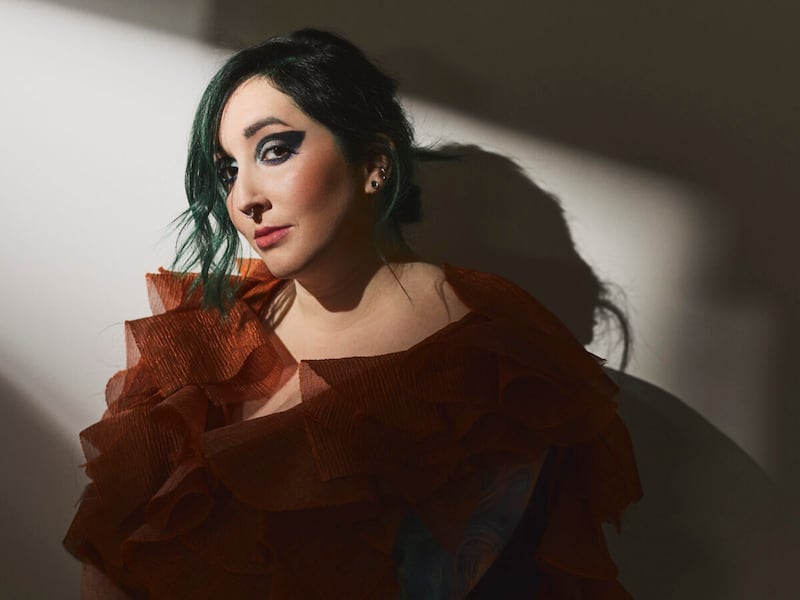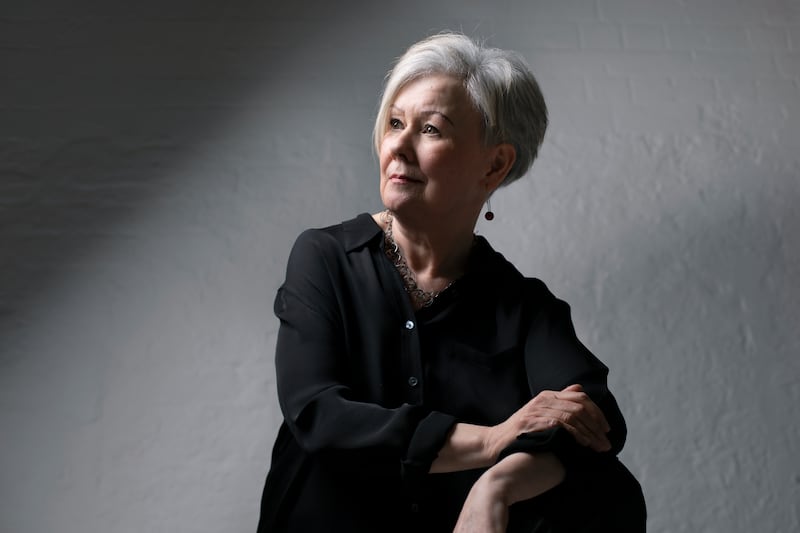It’s clear that Raymond Deane, Linda Buckley, Bekah Simms and Rhona Clarke are all composers who revel in the creation of new music. They approach their work in different ways but have one thing in common: they like to concentrate on one piece at a time – even if the potential for what Simms calls “cross-contamination” can’t always be avoided. All have been focusing on their compositions for the New Music Dublin festival, which takes place at the National Concert Hall, in Dublin, next week.
Raymond Deane: Anaphora
21-22 minutes. Seven months to write. To be performed by Hugh Tinney and the RTÉ Concert Orchestra
Deane had a stimulating lockdown. When the cycle of commissioning was disrupted, “I just thought, To hell with that. I started composing and produced a whole sequence of works that I’m really, really happy with.”
He changed his process, too. “In the attic of our house in Broadstone there’s an electric piano on one side of me and a computer on the other. And I sort of go from one to the other. I still write everything in pencil on manuscript paper first.” But with Anaphora, which the pianist Hugh Tinney will premiere with the RTÉ Concert Orchestra under Gavin Maloney, “I started putting what I had just drafted straight into Finale [a piece of music notation software] and then listening back to it.”
Deane says he composes in fits and starts. “I maybe spend an hour up here; then I go downstairs and I read a bit of something or other and maybe go and have lunch, and then come back and do a bit more.” He does throw material away, “but it’s always stuck in my head”. For Anaphora, he says, “I started fooling around at the piano, which is what I do when I’ve got something new coming up. I composed what I thought was going to be the beginning of the piece and actually wrote it down. And then I thought, Wait a minute: that’s kind of familiar. “I realised it was almost identical to the beginning of Quaternion, the last piece for piano and orchestra that I composed, back in 1988.”
RM Block
Instead of turning away he stayed with it, “to have a kind of recapitulation in transposition at the beginning. Quaternion was actually the first piece that I composed after emerging from a long period of, shall we say, addiction of one kind or another. So it was a really important piece for me to get back on my feet. Almost 35 years later, precisely this thing came back into my head, and I had written it down as though it was something completely new. I thought there had to be something symbolic about that.”
It was then that Deane came across the word anaphora, “a rhetorical term meaning the repetition of a word or expression at the beginning of successive phrases, clauses, sentences or verses. I thought I would use that as the basis of the structure of the piece.”
Linda Buckley: Tuile agus Trá
15-20 minutes. Three-four months to write. To be performed by Iarla Ó Lionáird and the National Symphony Orchestra

Linda Buckley’s daily concerns vary. “When it’s something orchestral, it’s mapping out overall shape, overall structure. Harmony is probably one of the most important aspects of what I’m interested in in music. So often a harmonic mapping over the whole course of the structure will be my beginning point. It feels sometimes that I can’t continue until I have a rough outline early on. But an electronic piece can be quite different, much more about textures, about sonic imaginings that you’re trying to transcribe into sound.”
Unlike Deane, she keeps everything. “I have little notebooks of melodic ideas, harmonic ideas, textural ideas, everywhere, all around the house. I return to them again and again if I’m working on a new piece. In some ways I’m very instinctive. I’ll just have a strong feeling that something will be right for a situation.”
Her new work, Tuile agus Trá, which is being performed by the sean-nós singer Iarla Ó Lionáird and the National Symphony Orchestra under David Brophy, is titled after a poem by Doireann Ní Ghríofa. “I met her in New York many years ago, and we’ve worked together ever since. I just feel a kinship with her work and her aesthetic. There’s something very heartful about what she does. It has great depth, but it’s also a bit mysterious, and there’s a bit of a gothic sensibility, which I definitely connect to as well. The title means Flood and Tide, or Ebb and Flow, and in her beautiful writing she talks a lot about the gush and the lull of the sea and the depth of it. I wanted to create that in the orchestra, a sense of expanse and depth. And it’s not always still or static. There are tumultuous elements as well.”
Buckley loves writing for the voice. “I’m singing all the time when I’m writing.” The new work is “a very personal piece. It felt like the ultimate expression of what I wanted to say through shadows connecting to my mother, Mary Buckley, who was such a strong west Cork woman, and to whom the piece is dedicated. It’s a kind of a tribute to her.”
Bekah Simms: Cryptid
32 minutes. More than a year to write. To be performed by Crash Ensemble

Bekah Simms’s typical composing day begins “as early as possible, because with every hour I start losing focus and thinking about emails and grant writing and doing all those composer-adjacent things. My practice is really sound-oriented. I’m an electroacoustic composer, so I work a lot with audio recordings, particularly one of the ensemble that I’m working with. The first thing I want is to just hear those players play, hear them doing various sounds, and then get to mucking them about in a digital audio workstation. There’s a lot of trial and error, especially in the early stages.”
She likens it to using her ears rather than her brain. “Which, having come from a doctoral programme in composition, is really freeing, to just turn off my brain and use my ears. That said, I know they’re intricately connected. But it feels really visceral to listen and be, like, ‘I like the way that sounds. I’m going to continue on with that.’ In the past couple of years everything has been very exploration-based.”
Her new work, Cryptid, which will be performed by Crash Ensemble (plus electronics), “is almost like a sequel piece to the first work that I wrote for Crash called Metamold. The feedback I got was that it was not long enough, that there were enough ideas in there to keep going for a longer work. And I agreed with that. Sometimes you’re pushing up against commission requirements for a piece of a certain duration. With Cryptid they were, like, ‘What do you want to do? You can do whatever you want.’ I also wanted to have a bunch of time with the ensemble before writing a single note, to kind of offer them the opportunity to bring some sounds and noises, and things they play around with in a practice room, for me to incorporate into the piece.”
Simms composed the music “at a huge transitional time in my life. For 10 years of my professional composing life I was in a very stable situation in one city, Toronto. I moved from Canada to Scotland. I’m seven months pregnant right now. So everything in my life was changing and very destabilised in a way. What I found is that when my life was more stable and my days were more consistent and predictable, my music was less stable, more active, more gritty, more maximal. When my life has been chaotic my music has calmed down, almost as a way of external therapy or something where it’s just, like, ‘You know what? I’m actually going to just luxuriate in these really slowly changing, just intonation chords for 10 minutes.’ Which is something I would have never done previously.”
Rhona Clarke: Rough Beast II
About six minutes. Six weeks to write. To be performed by the Evlana Sinfonietta

Rhona Clarke likes to start composing “straight after breakfast – half-nine or 10 o’clock at the latest. I like to get work done in the morning. I find that if I leave it till later, it just won’t happen. If I’m well into a work I can work at any time, really, if what I call the critical mass is there. Normally I don’t work at night at all. On a day where I have to go to a meeting, that will not be a good composing day. Nothing, nothing must distract.”
She doesn’t usually save what she doesn’t use. “I throw it away. If something is not useful, then it’s not useful. I don’t keep things and revisit them later.” That said, Clarke’s new work, Rough Beast II, which will be performed by the Evlana Sinfonietta, is a reworking of part of an earlier piece, a commission for the Decade of Centenaries in 2021.
“That piece was based on Yeats’s The Second Coming, so it’s this unsettled feeling all the way through – constant movement, constant propelling forward of music, except before the very end, where I quote the depiction of chaos from Haydn’s Creation, like a ghostly reference to the past. What Haydn wrote was meant to depict chaos. And now, of course, we just hear something beautiful. How it would have been received by the ears of Haydn’s contemporaries and by us now are very different, because of all that has passed in history since. I thought it was so relevant to this piece.”
The New Music Dublin festival is at the National Concert Hall, Thursday-Sunday, April 25th-28th




















